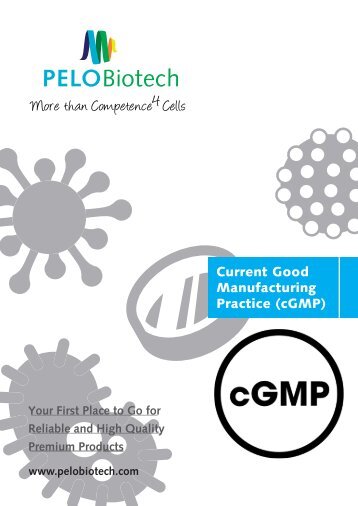Products at a Glance 2024
- Text
- Gmp
- Protease
- Spheresreadytouse
- Elisa
- Cfuassays
- Arrayandassays
- Metabolism
- Angiogenesis
- Airwaymodel
- Skinmodel
- Scaffolds
- Hydrogels
- Escellmedia
- Adultstemcells
- Primarycells
- Cells
- Enzymeblends
- Dispase
- Collagenase
- Tissuedissociation
www.pelobiotech.com
www.pelobiotech.com Alvetex® What is Alvetex®? It is a highly porous polystyrene scaffold designed for 3D cell culture. Cells grown in Alvetex possess a natural tissue-like structure that enables them to function in a more physiologically relevant manner. Alvetex 3D cell culture enables cells maintain their in vivo morphology, behavior and responsiveness within an in vitro model system. Alvetex® is a unique cellular environnement Manufactured to the highest standards of consistency each disc is engineered to a thickness of just 200 microns with pore sizes of 36-40 microns. No cell is ever further than 100 microns from the nutrient source enabling easily exchange of nutrients, gases and waste products by passive diffusion across short distances. Say goodbye to risks of foreign unknown materials such as proteins or cytokines of animal origin – unlike conventional materials used in cell culture Alvetex® is made from polystyrene and is completely inert. Advantage: Alvetex® has been designed for simple and routine use. It uses conventional cell culture plasticware. Therefore, any cell biologist can get into Alvetex 3D cell culture. Alvetex® is very easy to use! Just unwrap product, prepare scaffold, add cell suspension in appropriate medium at optimized seeding density and place in incubator to culture cells in 3D. Is Alvetex ® 3D cell culture compatible with other assays? In vitro derived 3D tissues grown on Alvetex ® can be studied using a variety of standard molecular and cellular techniques: • Tissue processing, fixation, embedding and sectioning • Histological staining, in situ hybridization • Bright-field microscopy and photographic imaging • Electron microscopy – both SEM and TEM • Cryostat Sectioning • Immunocytochemistry • Fluorescence microscopy, confocal, laser capture • Isolation of viable cells for passaging • Flow Cytometry and Cytospinning • Extraction of nucleic acid and total protein • Biochemical assays Application: A huge number of applications already exist. Just check www.reinnervate.com for further information. 50
www.pelobiotech.com SpheroSeev SpheroSeev & HydroSeev are made of recombinant bio-polymer with the strength and elasticity of spidersilk which provides mechanical support and ECM-like environment to cell for spheroid formation and in hydrogels. SpheroSeev is a ready-to-use solution for spheroid formation. Spheroids containing SpheroSeev showing an increased viability, functionality and is suitable for long-term spheroid cultures. HydroSeev is a special formulation to be added to hydrogels for a better performance and stability. Just contact us for protocols to improve your alligate and/or Matrigel® (Corning) hydrogels. Advantages of using SpheroSeev: • Forms lager spheroids • Increases cell stability and viability • Enhances proliferation • Enables spontaneous spheroid formation Simply add SpheroSeev fibers to the cells and mix well prior to seeding in a ultra-low attachment plate. Fibers will integrate into the spheroids, improving viability and functionality of the cells. Adipose derived mesenchymal stem/stroma cells (MSCs) cultured as spheroids with SpheroSeev demonstrate a higher viability than cultured without SpheroSeev. (Greenviable cells, red – dead cells). 51
- Page 1 and 2: More than competence for cells Prod
- Page 3 and 4: www.pelobiotech.com Our products at
- Page 5 and 6: U/mg DW www.pelobiotech.com PD Coll
- Page 7 and 8: www.pelobiotech.com CIzyme TM Produ
- Page 9 and 10: www.pelobiotech.com GMP iPS cells G
- Page 11 and 12: www.pelobiotech.com Adult Stem Cell
- Page 13 and 14: www.pelobiotech.com Primary Cells I
- Page 15 and 16: www.pelobiotech.com Pancreas We ext
- Page 17 and 18: www.pelobiotech.com Additionally, e
- Page 19 and 20: www.pelobiotech.com an essential ro
- Page 21 and 22: www.pelobiotech.com Eyes We isolate
- Page 23 and 24: www.pelobiotech.com Muscles We prov
- Page 25 and 26: www.pelobiotech.com Cell and Tissue
- Page 27 and 28: www.pelobiotech.com Cell culture me
- Page 29 and 30: www.pelobiotech.com Defined media f
- Page 31 and 32: www.pelobiotech.com Starvation Star
- Page 33 and 34: www.pelobiotech.com Cold-Preservati
- Page 35 and 36: www.pelobiotech.com Thawing: 1. Jus
- Page 37 and 38: www.pelobiotech.com • Fetal Bovin
- Page 39 and 40: www.pelobiotech.com Organ derived N
- Page 41 and 42: www.pelobiotech.com • Depolymeriz
- Page 43 and 44: www.pelobiotech.com Safety Tools Re
- Page 45 and 46: www.pelobiotech.com 3D Scaffold-fre
- Page 47 and 48: www.pelobiotech.com 1. Tissue Engin
- Page 49: www.pelobiotech.com SEEDEZ TM What
- Page 53 and 54: www.pelobiotech.com Collagen based
- Page 55 and 56: www.pelobiotech.com Applications:
- Page 57 and 58: www.pelobiotech.com Midifluidic Mid
- Page 59 and 60: www.pelobiotech.com Blood-Brain-Bar
- Page 61 and 62: www.pelobiotech.com Benefits of usi
- Page 63 and 64: www.pelobiotech.com Antibodies Anti
- Page 65 and 66: www.pelobiotech.com Proteins Protei
- Page 67 and 68: www.pelobiotech.com make europium c
- Page 69 and 70: www.pelobiotech.com Small Molecules
- Page 71 and 72: www.pelobiotech.com Cell-based Assa
- Page 73 and 74: www.pelobiotech.com Nucleic Acid an
- Page 75 and 76: www.pelobiotech.com Ordering/Reques
Inappropriate
Loading...
Mail this publication
Loading...
Embed
Loading...
About us
This website is published by
PELOBIOTECH Gmbh
Am Klopferspitz 19
82152 Planegg/Martinsried
(Phone): +49 89 517 286 59-0
(Fax): +49 89 517 286 59-88
E-Mail: info@pelobiotech.com
Managing directors:
Dr. Lothar Steeb
Dr. Peter Frost
Registergericht/Trade register:
Amtsgericht München HRB 197203
UID-Nr: DE282095341
EORI-Nr.: DE513247033551940
Responsible for the content (V.i.s.d.M.):
Dr. Peter Frost
Linked Sites: Although we thoroughly check all sites linked to our webpage, we decline any responsibility for their contents.







































Follow Us
Instagram
Email
LinkedIn
Twitter